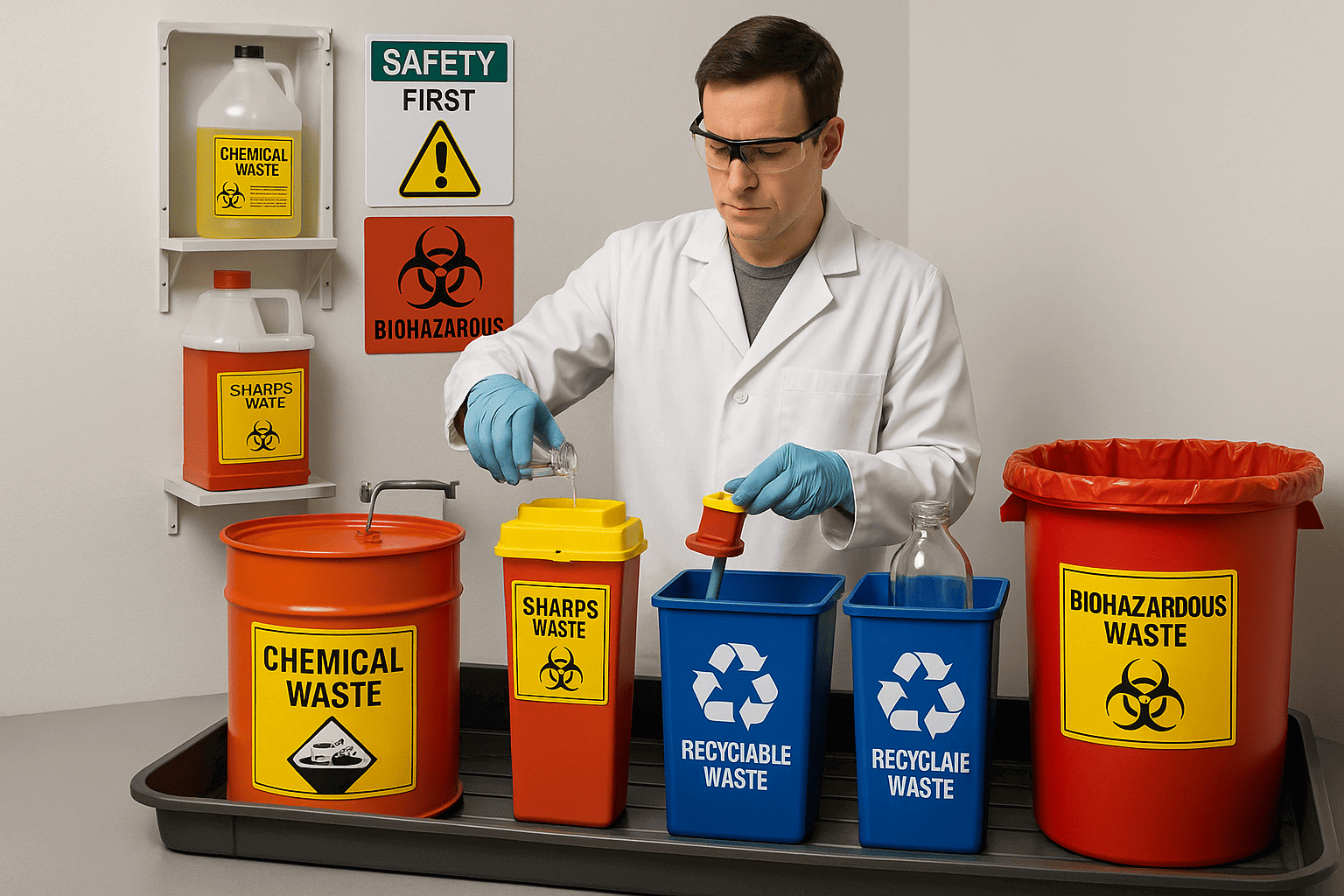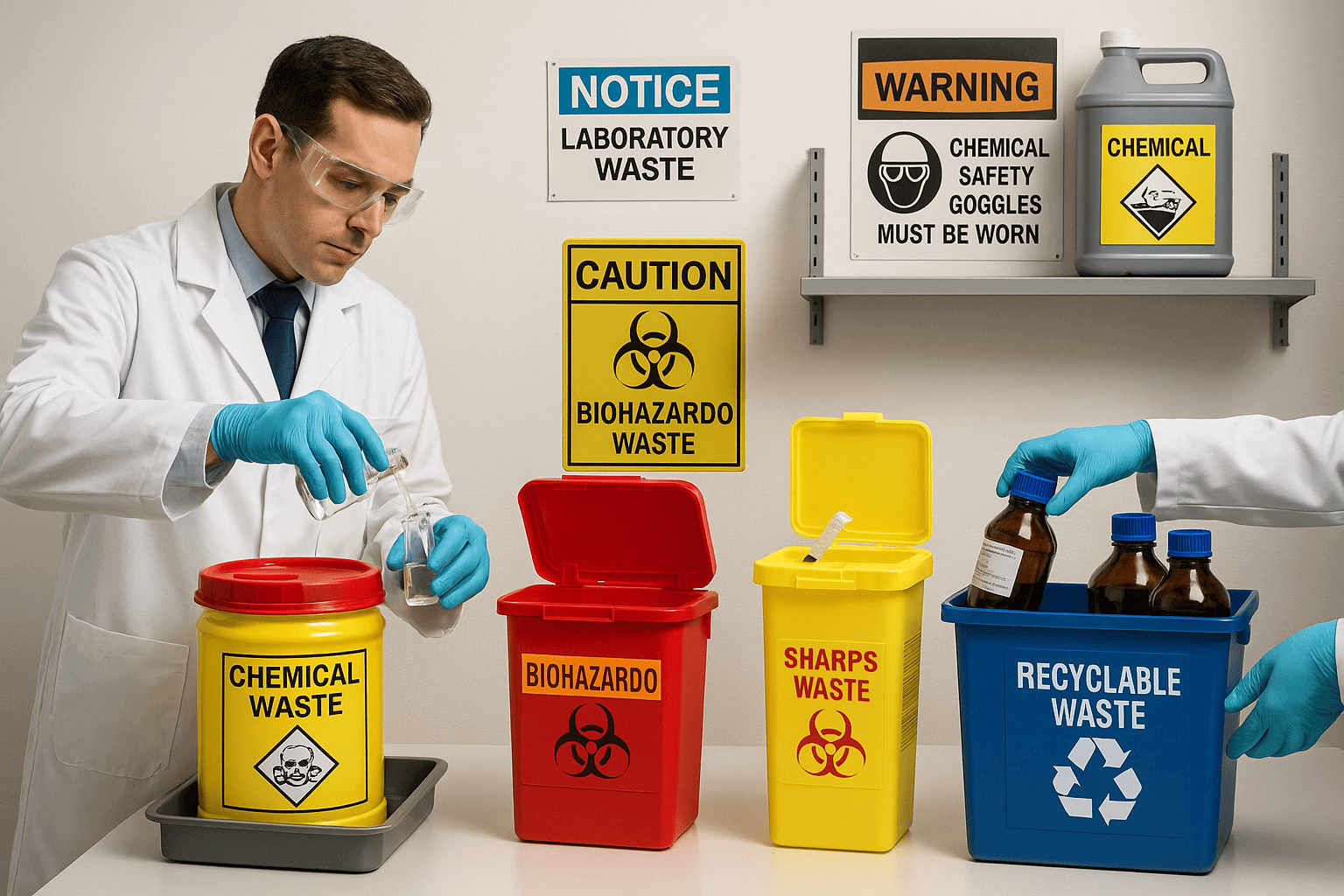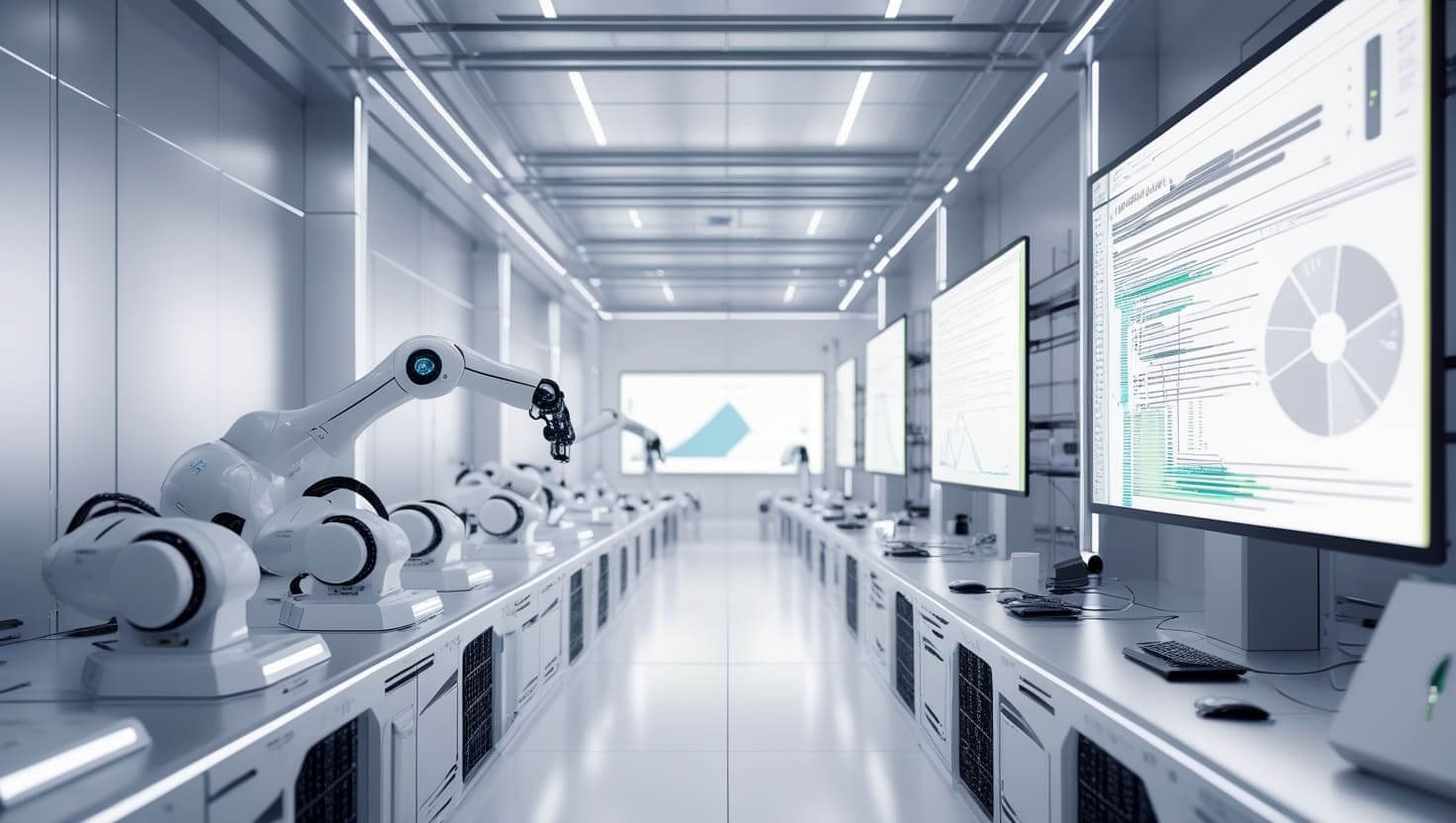Managing waste in laboratories is more than just a routine task—it’s a critical safety and environmental concern. From biohazards and chemicals to sharps and recyclables, every lab generates waste that must be handled with care. Following the best practices for lab waste disposal not only protects human health but also ensures compliance with legal and environmental standards.
This article explains the essentials of safe laboratory waste management, focusing on waste disposal, recycling, hazard control, and best practices for handling different types of lab waste.
Understanding the Importance of Laboratory Waste Management
Laboratory waste management refers to the proper collection, segregation, storage, treatment, and disposal of all waste generated during lab activities. These wastes can be infectious, toxic, sharp, or otherwise hazardous to people and the environment.
Without a proper waste management plan, a lab risks health hazards, legal issues, environmental pollution, and even damage to its reputation. Every laboratory—whether in education, research, healthcare, or industry—must develop a structured and safe waste disposal approach.
Types of Laboratory Waste & How to Handle Them
Let’s break down the common types of waste and how to manage them effectively.
1- Biohazardous Waste
Biohazardous waste includes materials like human or animal tissue, blood, body fluids, culture dishes, and infectious microorganisms.
Best Practices:
- Collect waste in red biohazard bags or containers.
- Always label containers with the biohazard symbol.
- Autoclave biological waste when required before final disposal.
- Store in leak-proof, puncture-proof bins.
- Arrange pickup by certified medical waste disposal companies.
Proper waste disposal in the laboratory ensures that biological risks are minimized and disposed of legally.
2- Chemical Waste
Chemical waste includes acids, bases, solvents, reagents, and other hazardous substances. Many of these materials are corrosive, flammable, or reactive.
Best Practices:
- Do not mix incompatible chemicals.
- Use clearly labeled, chemical-resistant containers.
- Never pour chemical waste down the drain unless officially permitted.
- Use secondary containment trays to prevent spills.
- Maintain a chemical inventory and update Material Safety Data Sheets (MSDS).
Safe chemical disposal is a key part of effective waste management laboratory practices, helping avoid lab fires, explosions, or toxic releases.
3- Sharps Waste
Sharps include broken glass, needles, syringes, scalpels, and pipette tips. These can cause injuries and potential infections.
Best Practices:
- Dispose of sharps in rigid, puncture-resistant sharps containers.
- Do not bend, break, or recap needles.
- Fill containers only up to the fill line.
- Place sharps bins close to workstations.
- Use gloves and handle all sharps as if contaminated.
Handling sharps properly is a crucial element of the management of laboratory waste, especially in research, healthcare, and pathology labs.
Segregation & Labeling: The First Step Toward Safety

Segregation means separating different types of waste at the source. It’s one of the most important rules in laboratory waste disposal and helps prevent accidents and incorrect treatment.
Key Tips:
- Use color-coded containers: red for biohazards, yellow for chemical waste, blue/white for sharps, etc.
- Place clear and visible labels on all containers.
- Post waste segregation posters in lab areas.
- Never mix different waste categories (e.g., biological with chemical).
Proper segregation leads to safer handling, cost savings, and easier compliance with environmental regulations.
Recycling and Minimizing Waste in Labs

Modern labs are also aiming to reduce waste and recycle wherever possible. Not all waste is hazardous—some can be safely reused or recycled.
Sustainable Lab Practices:
- Use reusable glassware instead of disposable plastics when safe.
- Recycle packaging materials like cardboard and clean plastic.
- Buy lab materials in bulk to reduce packaging waste.
- Use digital documentation to reduce paper use.
- Encourage a culture of waste reduction in the lab team.
Incorporating sustainability into lab waste disposal helps labs reduce environmental impact and operating costs.
Hazard Control & Staff Training
Hazard control goes beyond waste segregation—it includes training, equipment, and procedures for safe handling and emergency response.
Best Practices:
- Train all lab personnel in waste categories and emergency procedures.
- Use PPE (Personal Protective Equipment) such as gloves, coats, and goggles.
- Keep eyewash stations and spill kits accessible.
- Conduct regular safety audits and drills.
- Maintain clear signage for waste storage and handling zones.
A well-trained team is essential for successful management of laboratory waste and for maintaining an incident-free workplace.
Following Regulatory Compliance
Every country and region has laws and guidelines that must be followed when disposing of lab waste. These are enforced by environmental and health safety authorities.
Compliance Tips:
- Keep accurate logs of waste types and disposal methods.
- Work only with licensed waste contractors.
- Use proper labels and documentation for hazardous waste.
- Store records for audits and inspections.
- Understand and follow guidelines like OSHA, EPA, or CPCB, depending on your region.
Maintaining compliance ensures a safer lab environment and avoids fines or legal penalties.
Emergency Preparedness in the Lab
Even the best procedures can’t prevent all accidents. Emergency preparedness should be part of every waste management plan.
Preparedness Essentials:
- Spill response kits for biological and chemical spills.
- Fire extinguishers in areas with flammable waste.
- First aid kits and trained first responders on site.
- Clearly marked exits and emergency contact posters.
- Mock drills and incident reporting protocols.
Being prepared limits the damage from unexpected incidents and improves lab safety culture.
Why Choose a Professional Lab Setup Partner?
At LabTurnkey.in, we offer more than just furniture and equipment—we deliver complete laboratory infrastructure solutions tailored for safety, functionality, and compliance. With years of experience in turnkey lab setups, our team understands the importance of laboratory waste management as part of lab design and operations.
From planning designated waste zones to recommending eco-friendly materials and ensuring waste disposal compliance, we help you build a lab that’s not only efficient but also safe and sustainable. If you’re setting up a new lab or upgrading your current one, let our experts guide you toward smarter and safer operations.
Final Thoughts
Effective laboratory waste management is the foundation of a safe and legally compliant laboratory. Whether it’s biohazards, chemicals, or sharps, every waste type requires specific handling and disposal methods. Through proper segregation, recycling, hazard control, and regular training, labs can reduce risk, protect the environment, and maintain smooth operations.
By partnering with professionals like LabTurnkey.in, you can ensure your lab meets the highest safety and waste compliance standards from day one. Let’s build cleaner, safer, and more efficient laboratories—together.



